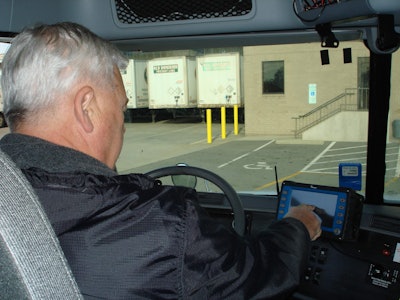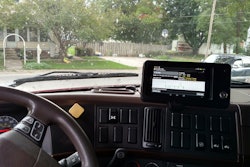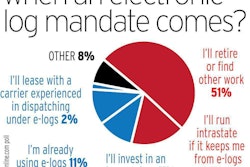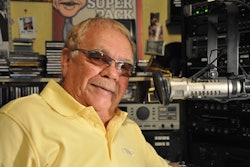
To wit, under the “definitions” portion of the section devoted to “electronic logging devices”:
The term “electronic logging device” means an electronic device that … is capable of recording a driver’s hours of service and duty status accurately and automatically.
The definition goes on to qualify that by leaving fairly open other guidelines the Secretary of Transportation can promulgate for the devices, such as specifications related to the requirements that they be tamper-resistant, be able to record location data, etc.
McKelvie viewed this as essentially referring to a device that doesn’t exist, as it seems to leave out any consideration of the operator’s involvement in telling such a device what exactly he/she is doing when the vehicle stops moving. The distinction between off-duty and on-duty not-driving lines in any driver’s log book I suspect will always be entirely up to the operator’s input. It’s a distinction, furthermore, that opponents to any EOBR mandate have continually made in their objections to the misconception so many members of the general public seem to have about hours and EOBRs. I’ve certainly written about that misconception: that the devices can do it all for the driver.
If we take that automatically quite literally, the mandate for EOBRs as they currently exist would then seem to require a revision to the hours-of-service rule to eliminate distinctions between off-duty, sleeper berth and on-duty not-driving time. The only duty status EOBRs can accurately and automatically record is drive time.
I don’t see anyone on the regulatory side of things clamoring for that kind of hours regs revision. Do you? All the same, the notion points right in the direction of what other opponents of the mandate fear: that carriers will use the devices to pressure drivers to maximize their eleven hours of driving and log all stop time as off-duty, reducing any detention pay waiting at the loading docks they may well have ever received and, combined with supporting documents “relief” that may come to carriers utilizing EOBRs to eliminate paper/data trails, “hang drivers out to dry” in accident cases for any log violations. (For further commentary on that last notion, see frequent Channel 19 commenter E.F. McHenry’s elaboration on it here.)
In any case, there is a bit of a problem with taking automatically so literally, and that’s the fact that the highway bill’s “electronic logging device” definition language is lifted directly from the old automatic on-board recording device (AOBRD) regulation, in existence since before the time Werner Enterprises began using a version of EOBRs more than a decade ago.
Those definitions state an AOBRD is “an electric, electronic, electromechanical, or mechanical device capable of recording driver’s duty status information accurately and automatically as required by §395.15.” By referring to the 395.15 regulation, regulators are limiting what “automatically” means by elaborating on device specs elsewhere and assuming driver input. I’d imagine they’ll do much the same with any future regulation.
I put the question to Norita Taylor of the Owner-Operator Independent Drivers Association of whether the definition of EOBRs as “automatic” recorders of duty status presented an opening for opponents, such as her organization, or whether the old regulation had done so in years gone by. (Though no mandate for AOBRDs was ever codified at that time, it was to a certain extent pursued.) Taylor noted that “what happens is that [EOBR] proponents and [the Federal Motor Carrier Safety Administration] appear to be quite satisfied with the limitation of what is considered ‘automatic.’ It just doesn’t seem to matter to them.”
For proponents, it becomes easy to point to how much of the rest of the world has been filled with “automatic” things, and that an EOBR “should be another ‘automatic’ to add on to the list of automatic things in our lives,” Taylor said, “regardless of how automatic it really is.”
Calling an EOBR’s operation automatic then just adds more fuel to the fire of the previously mentioned safety-cure-all misconception that has driven us to where we are today — staring down an EOBR mandate. (OOIDA has, of course, made progress on fighting implementation. See this story for more on the House transportation appropriations bill amendment that passed and would defund implementation of the mandate through fiscal year 2013 if the Senate also takes it up.)
As for owner-operator McKelvie, he’s also a frequent contributor to the Center Lane Show call-in talk program on BlogTalkRadio.com, happening every Wednesday. He promises to bring all of this up tonight for discussion, including some info he says disproves the safety-cure-all misconception. Join him and the hosts at 6 p.m. Central tonight via https://www.blogtalkradio.com/centerlaneshow.









